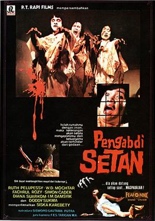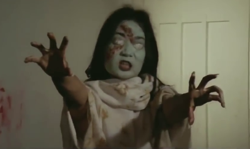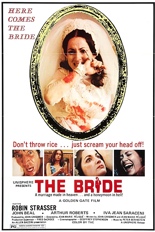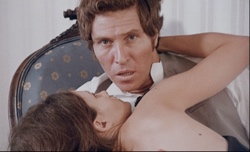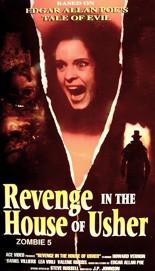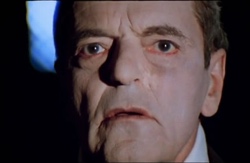
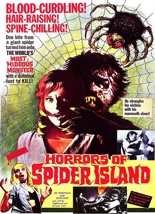 Perhaps a more fitting title for the German horror flick Horrors of Spider Island should be Hard-Ons of Spider Island, as in between the scant spider-man — with great power comes great perversity! — there are fantastical amounts of Teutonic skin, sex and sand to keep even the most passive of viewers somewhat intrigued.
Perhaps a more fitting title for the German horror flick Horrors of Spider Island should be Hard-Ons of Spider Island, as in between the scant spider-man — with great power comes great perversity! — there are fantastical amounts of Teutonic skin, sex and sand to keep even the most passive of viewers somewhat intrigued.
Hot-shit nightclub producer Gary (Alexander D’Arcy) is planning a big song-and-strip showcase in Singapore, hiring a dozen or so sexy sirens with names like Babs, Nelly and Gladys. But, wouldn’t you know it, their plane goes down somewhere in the Pacific; as they’re arguing over water rations, a large island is spotted in the distance.
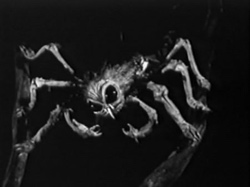 After finding an old scientist drained of his bodily fluids in a big spider web, Gary is bitten by the uranium-enriched spider and becomes an amazing spider-man. But instead of dealing with this monstrous blight of subhumanity, for the next few weeks the gang frolics and fornicates with a 1960s-style sensuality that shouldn’t really titillate but, boy, does it ever.
After finding an old scientist drained of his bodily fluids in a big spider web, Gary is bitten by the uranium-enriched spider and becomes an amazing spider-man. But instead of dealing with this monstrous blight of subhumanity, for the next few weeks the gang frolics and fornicates with a 1960s-style sensuality that shouldn’t really titillate but, boy, does it ever.
Also released in the U.S. under the name It’s Hot In Paradise, the lack of sturdy spider-scares is more than ably surrendered by the statuesque skirts that lounge about in garters, girdles and other essential tropical island wear, so much so that about 45 minutes into this, I forgot this was supposed to be a horror flick.
But, you know, I’m guessing the filmmakers probably did, too. It’s like the old saying goes: When life gives you lingerie, make linger-ade. Or something like that … —Louis Fowler

